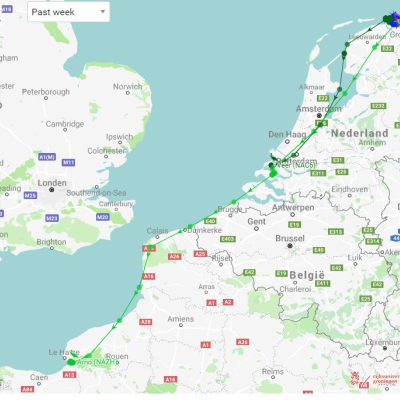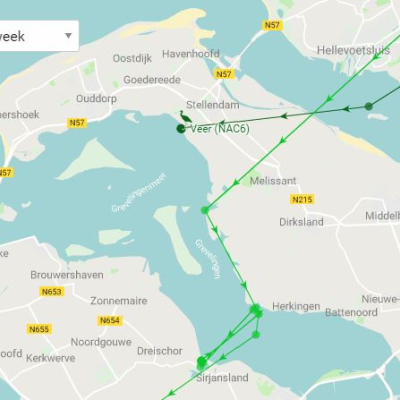Yesterday morning, also Veer departed. After a two hour stop in the IJsselmeer near Kop Afsluitdijk she continued and, just like Arno but at a slightly different spot, she stopped in the Grevelingenmeer to spend the night. At 9:00 this morning she was still there, although she moved a bit to the west, and is currently right in front of the “Uitzichtpunt Markenje”. So if someone has time to go and have a look at her and collect data about her environment, this would be a great opportunity! Her most recent position is visible on the Animal Tracker app and you can send your data using the online observation form . Stay tuned to see whether she stays a bit longer in the Grevelingenmeer or will soon head further south.


Despite the fact that the Camargue is at a more southern latitude, where temperatures are currently still around 30 degrees, the juveniles from the Camargue departed (slightly) earlier than the ones from the Netherlands. What triggered them to leave? Birds are known to have an internal clock that is influenced by (changes in) day length. But the environment likely also plays an important role. Food conditions will determine how fast birds can build up their energy stores to fuel their long flights, and wind conditions are also known to play a role: birds are more likely to depart on days with tailwinds than on days with headwinds. Also the behavior of other spoonbills in the group may influence the exact timing of departure: individual schedules may become synchronized due to the preference of spoonbills to migrate in (large) flocks.
